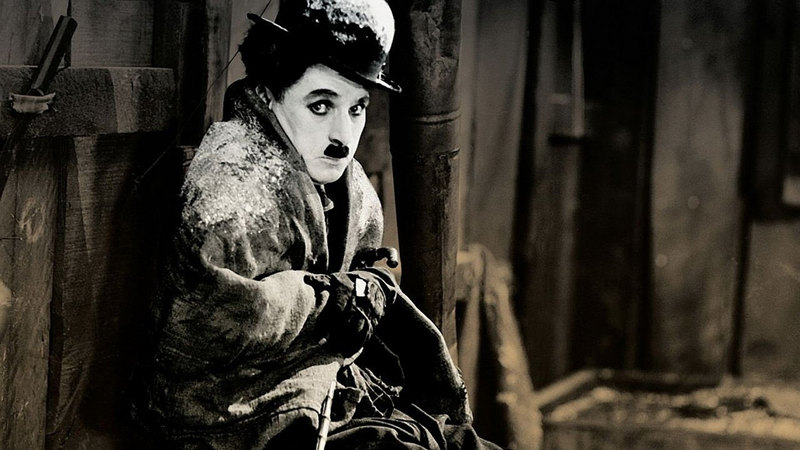Along with “Knute Rockne: All American” (1940), this 1942 film about baseball legend Lou Gehrig was one of the first sports biopics. Curiously, though, there’s not nearly as much baseball in the film as you’d expect. The reason, we learn in one of five new bonus features on this Collector’s Edition, is that producer Sam Goldwyn paid attention to what women liked, thinking that they had a pretty big say about what movies couples went to. Because of that, he made sure that “The Pride of the Yankees” was as much a love story between the Yankees first baseman and Chicago ballpark hot dog heiress Eleanor Twitchell as it was about baseball.
In 1942, what mattered most was who’s under contract, not who seemed right for the part. Like his co-star, Gary Cooper would earn an Oscar nomination for his performance, but he wasn’t a likely choice. While he looked uncannily like Gehrig, the film begins with Gehrig as a college freshman, and Cooper was 40 at the time. What’s more, Cooper wasn’t much of a baseball fan, and he needed special coaching to get him to look remotely at home on the diamond. When he did pick up a bat, it was to hit right-handed, while Gehrig batted left. But Cooper owed Goldwyn a picture, and director Sam Wood (“Goodbye, Mr. Chips”) got around that lefty-righty problem by sewing numbers on Cooper’s uniforms backwards and having him bat right-handed and run to third base. Then they flipped the film so it looks like he’s batting lefty. No big deal, Goldwyn thought.
And you know what? He was right. This film had such a winning script and cast that it garnered 11 Academy Award nominations (including Best Picture) and set the standard for biopics to follow. Cooper and Teresa Wright seem so joyously right as a couple that it’s easy to forgive the sentimental moments (and there are plenty). Gehrig, you may recall, died at age 37 of ALS (amyotrophic lateral sclerosis), a progressive neuromuscular disease that’s now better known as Lou Gehrig’s Disease. You know where this film is headed, because Gehrig’s final speech at Yankee Stadium, where he became the first athlete to have his jersey retired, is one of the most famous in sports. It’s also one of the most inspirational. It begins, “Fans, for the past two weeks you have been reading about the bad break I got. Yet today I consider myself the luckiest man on the face of the earth.” Lucky, because he had a great marriage, great parents, great in-laws, and a job that allowed him to do what he wanted. Gehrig was part of the famous Yankees’ Murderer’s Row, winning baseball’s rare Triple Crown in 1934 by hitting for a higher average (.363), more home runs (49), and more runs batted in (165) than anyone else in the majors. But his real achievement–a record that stood until Cal Ripken, Jr. topped it in 1995–was playing 2,130 consecutive professional games, despite 17 fractures in his hands, several concussions, and recurring back pain. He was truly the “Iron Horse.”
Though “The Pride of the Yankees” is a slow-moving celebration of Gehrig’s life, it still holds up today, for the most part. We watch him What makes this one a real treat for baseball fans isn’t just the Gehrig tribute. It’s the fact that Babe Ruth plays himself in the picture, and it’s not just a bit part. We see a lot of the baseball legend, and that’s awfully exciting. Lesser-known Yankees like fellow Hall of Famer Bill Dickey, Bob Meusel, Mark Koenig, and Bill Stern also appear, as does Cooper sidekick Walter Brennan, who plays a baseball writer who “adopts” Gehrig.
Whether we watch the quieter Gehrig talking to a crippled boy in the hospital after Ruth’s grandstanding photo op or being duped by teammates into taking a bite out of the Bambino’s straw hat, the off-the-field moments are charged with just as much emotion and drama as the baseball games. Surprisingly, it’s not Gehrig’s heroics on the field that dominate. It’s the story of how he grew up, how he was a bit of a mama’s boy, how he was a naïve fellow who was the target of pranks, how he doubted his own ability even though it was astounding, and how he found a soul-mate his first appearance at the plate in Chicago when she tagged him with the nickname “Tanglefoot” after he fell over a row of bats on the way to the plate. That’s a lot of ground to cover, and so it’s probably appropriate that the one Oscar this picture snagged was for Best Film Editing. Given the range of material, everything flows miraculously well.
What made “The Pride of the Yankees” the biopic to beat was the way it delved deeply into the personal life of a very private athlete, showing fans the man behind the legend. And it is a beautiful love story, on two levels. Mrs. Gehrig kept a scrapbook during the 15 years or so that she was a baseball wife, and in one scene in the movie she has a little fun at the sportswriter’s expense by implying Lou hasn’t been coming home, and that he’s been unfaithful. But then she drives him to a sandlot where he’s umpiring a stickball game for the local kids. Any time you can take somebody out of the newspaper headlines and pump that paper body full of real life, it’s an achievement. And that’s why “The Pride of the Yankees” still works today. There’s the Yankees mystique, the Murderer’s Row mystique, and the Iron Horse mystique. But when you get right down to it, it’s what Gehrig did off the field that’s just as fascinating . . . if not more so.
Video:
Some versions of this film have been colorized, but this is the original black-and-white, presented in the original 1.33:1 aspect ratio. There’s a slight graininess in many scenes, but this is a wartime film, and an old biography, and so it’s hardly noticeable. The contrast is pretty decent.
Audio:
The audio is a no-frills English, Spanish, or French Mono, with subtitles in Spanish and English (CC). There’s the usual flatness that accompanies Mono, but at least the amount of distortions (hiss, pop, scratchiness) is kept to a minimum.
Extras:
I first saw this film as a young boy and continue to think it’s one of the best old-Hollywood biographies, and so I’m a sucker for ANY bonus features. All of the featurettes are short, but they manage to cover a lot of ground. An unexpected pleasure is “Always–The Story Behind the Song.” One of the main songs in this, which signifies the Gehrig’s love, is the Irving Berlin song “Always,” which we learn was Mrs. Gehrig’s favorite song, and one she requested for the film. There’s a lot of biographical information on Berlin as well, which, as I said, was an unexpected treat. A making-of feature tells basic background information on how the film came together, with the young Goldwyn telling about his famous forebear’s role in bringing the film to the big screen. A couple of bonus features also tell about Gehrig and his prowess, as well as the collection of memorabilia that was left behind. Rounding out the extras are what amounts to a pair of PSAs–one that features the president of the ALS charity talking about the disease, and the other focusing on current baseball pitcher Curt Schilling, who’s made ALS his own cause for the past 15 years.
Bottom Line:
Biographies were all the rage between 1940 and 1960, and “The Pride of the Yankees” has always been one of the best of the old Hollywood biopics. We learn about Lou Gehrig, and, in the process, we gain inspiration for how to better live our own lives. And that’s what those old biopics were all about. They were sentimental but effective lessons in citizenship . . . and life.


